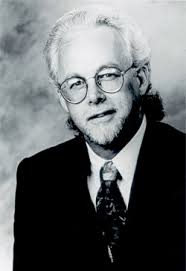 Bill White seems to be pumping out his writings at the moment. I didn’t think this prolific writer could be even more productive, but I was wrong. Here’s a blog that links to a variety of Bill’s recent writings.
Bill White seems to be pumping out his writings at the moment. I didn’t think this prolific writer could be even more productive, but I was wrong. Here’s a blog that links to a variety of Bill’s recent writings.
I was particularly interested in Bill’s piece on the state of the new recovery advocacy movement in the US. This is essential reading, so I thought I’d devote some blogs on a multitude of points raised by Bill. Here’s the first:
‘New Recovery Advocacy Movement Achievements
We would not be here today if those at the center of this emerging movement in the late 1990s and early 2000s had not made some very good decisions. I want to record some of the decisions that in retrospect I think were most important.
Historical Continuity. The first thing we got right was maintaining historical continuity with, and paying tribute to, earlier recovery advocacy efforts. We honored the past and continuing achievements of the National Council on Alcoholism and Drug Dependence (NCADD), the Johnson Institute as well as the earlier work of such organizations as the Society of Americans for Recovery (SOAR).
By entering the alcohol and drug problems arena from a position of gratitude, humility, and respect and by grounding our movement in core recovery values, we minimized competition and conflict with kindred individuals and organizations. The embrace of such a partnership model continues to serve us very well.
Decentralized Leadership. Social movements are often fueled by charismatic leaders who are then prone to wrap themselves in closed organizations that become progressively disconnected from their grassroots constituencies.
Perhaps because of our collective character (organizing people in recovery has been compared to trying to herd cats), we have avoided the pitfalls of aligning ourselves under the umbrella of a charismatic leader, and we have maintained our local, grassroots focus.
I can recall early on the confusion of the media when we were asked who the leaders were of this new movement and we declared either that we had no leaders or that we were all leaders. We got this right.
Cultural and Recovery Pathway Diversity. What we have achieved was born within a profound respect for the diversity of recovery experience and the legitimacy and wonder of such diversity.
We spoke of a rainbow and a coat of many colors to capture our vision of a most culturally diverse movement, and we shared an ecumenical vision of a day when AA and NA members would walk beside people in secular recovery, faith-based recovery, medication-assisted recovery, and natural recovery with each of us not wearing our pathway identities but a larger identity: people in long-term recovery.
“The Little Engine that Could”. We decided early on to act as if we were a movement of import until we became one.
We began referring to ourselves nationally and locally as a movement, acting far more bold than our early numbers would have warranted, and we documented our history via papers, recorded interviews, and visual images in the belief that what we were doing was historical and thus important to document. It was and is.”
Sorry, but i am just blown away by this piece of writing. Bill certainly captures things well – and captivates. Tomorrow, I’ll continue with Kinetic Ideas and Core Strategies.


